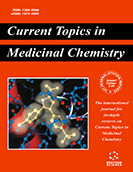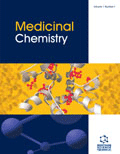Abstract
Diploid natural gynogenetic goldfish (2nGRCG), triploid hybrids (3nRB) and tetraploid hybrids (4nRB) are generated by distant hybridization of red common goldfish (RCG, Carassius auratus red var.) and blunt snout bream (BSB, Megalobrama amblycephala). In the present study, we obtained the complete mitochondrial DNA (mtDNA) sequences of the hybrid offspring and compared them with the homologous sequences of RCG and BSB. All mtDNA sequences of these hybrids were 16,580bp in length, and the genes number, size, and order were quite similar to that of RCG. Genetic analysis revealed that the mtDNA sequences of these hybrids had high similarity (>99%) and low divergence (<2%) to their maternal RCG, yet lower similarities (84%) and higher divergences (16%) to their paternal BSB. The phylogenetic analysis also showed that the sequences of 2nGRCG, 3nRB and 4nRB were clustered with RCG rather than with BSB. These results indicate that the mitochondrial genomes of 2nGRCG, 3nRB and 4nRB remain maternally inherited after hybridization and polyploidization. Moreover, clade separation of hybrid offspring from their paternal BSB in the phylogenetic tree implies that phylogenetic analysis of mtDNA is incomplete for elucidating the true relationships between different species, particularly when they have undergone hybridization or allopolyploidization. Our study provides significant information for both evolution and genetic studies of mtDNA for hybrid species and allopolyploidization species.
Keywords: Evolution, hybridization, maternal inheritance, mtDNA.
Current Molecular Medicine
Title:Inheritance of the Complete Mitochondrial Genomes in Three Different Ploidy Fishes
Volume: 14 Issue: 10
Author(s): C.-P. You, R.-R. Zhao, J. Hu, S.-J. Liu, M. Tao, C. Zhang, Y.-B. Chen, Q.-B. Qin, J. Xiao, W. Duan and Y. Liu
Affiliation:
Keywords: Evolution, hybridization, maternal inheritance, mtDNA.
Abstract: Diploid natural gynogenetic goldfish (2nGRCG), triploid hybrids (3nRB) and tetraploid hybrids (4nRB) are generated by distant hybridization of red common goldfish (RCG, Carassius auratus red var.) and blunt snout bream (BSB, Megalobrama amblycephala). In the present study, we obtained the complete mitochondrial DNA (mtDNA) sequences of the hybrid offspring and compared them with the homologous sequences of RCG and BSB. All mtDNA sequences of these hybrids were 16,580bp in length, and the genes number, size, and order were quite similar to that of RCG. Genetic analysis revealed that the mtDNA sequences of these hybrids had high similarity (>99%) and low divergence (<2%) to their maternal RCG, yet lower similarities (84%) and higher divergences (16%) to their paternal BSB. The phylogenetic analysis also showed that the sequences of 2nGRCG, 3nRB and 4nRB were clustered with RCG rather than with BSB. These results indicate that the mitochondrial genomes of 2nGRCG, 3nRB and 4nRB remain maternally inherited after hybridization and polyploidization. Moreover, clade separation of hybrid offspring from their paternal BSB in the phylogenetic tree implies that phylogenetic analysis of mtDNA is incomplete for elucidating the true relationships between different species, particularly when they have undergone hybridization or allopolyploidization. Our study provides significant information for both evolution and genetic studies of mtDNA for hybrid species and allopolyploidization species.
Export Options
About this article
Cite this article as:
You C.-P., Zhao R.-R., Hu J., Liu S.-J., Tao M., Zhang C., Chen Y.-B., Qin Q.-B., Xiao J., Duan W. and Liu Y., Inheritance of the Complete Mitochondrial Genomes in Three Different Ploidy Fishes, Current Molecular Medicine 2014; 14 (10) . https://dx.doi.org/10.2174/1566524014666141203100205
| DOI https://dx.doi.org/10.2174/1566524014666141203100205 |
Print ISSN 1566-5240 |
| Publisher Name Bentham Science Publisher |
Online ISSN 1875-5666 |
 12
12
- Author Guidelines
- Bentham Author Support Services (BASS)
- Graphical Abstracts
- Fabricating and Stating False Information
- Research Misconduct
- Post Publication Discussions and Corrections
- Publishing Ethics and Rectitude
- Increase Visibility of Your Article
- Archiving Policies
- Peer Review Workflow
- Order Your Article Before Print
- Promote Your Article
- Manuscript Transfer Facility
- Editorial Policies
- Allegations from Whistleblowers

















.jpeg)








